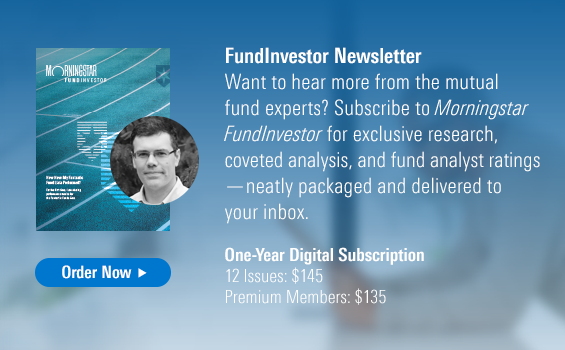Fund Managers Who Are Buying Their Funds
Some managers have boosted their investment in their funds. I name names.
This article was published in the September 2016 issue of FundInvestor. Download a complimentary copy of FundInvestor by visiting the website.
Fund managers are savvy investors, so why not follow their lead?
U.S. mutual funds are required to disclose how much money their managers have invested in their own funds. Each year, funds file a Statement of Additional Information that lists ownership levels in bands that range from zero to more than $1 million. As of August 2016, 1,036 funds had at least one manager who invested more than $1 million of their own money in their funds. On the flip side, 3,822 funds had no investment from any of their managers.
The managers know something about their funds, and it is fair to assume their investment is a useful signal. In fact, I’ve found manager ownership to be one of the better predictors of future performance, though not as good as expense ratios. Manager ownership is a good indicator, but, as with fees, it alone is not sufficient to lead me to buy a fund. I still want to know all the fundamentals and how the fund serves my portfolio.
The group of funds run by managers investing no money in their funds had a meager 35% success rate over the ensuing five years, those with between $100,001 and $500,000 had a 43% success rate, and those with more than $1 million had a 47% success rate. Because about one third of funds were merged away or liquidated over that five-year stretch, a 47% success rate is actually quite good. If we look at a risk-adjusted success rate, the story is fairly similar. We found a risk-adjusted success rate of 28% for managers with no investment compared with 39% for those with $1 million or more.
Looking at asset classes, the trend was pretty consistent. In U.S. equities, funds with no investment had a dismal 29% success rate versus 39% for the top rung. Coming out of the bear market, attrition was higher in U.S. equities than in other asset groups. For international funds, those with zero investment had a 32% success rate versus 68% for those with more than $1 million invested. Balanced funds had a 32% success rate on the bottom rung versus 85% on the top rung.
I’ve gathered ownership data on the Morningstar 500 funds. Let’s take a look at managers who have moved into the top tiers of ownership. (We will be adding this information to Morningstar.com shortly.)
Managers Buying Tad Rivelle
Manager Tad Rivelle took his investment at this fund from zero to more than $1 million. It’s a welcome sign for this fund, which has a Morningstar Analyst Rating of Bronze. Comanagers Mitchell Flack and Bryan Whalen have between $100,000 to $500,000 and $10,000 to $50,000 invested in the fund, respectively. The trio took over the fund in the wake of Jeffrey Gundlach’s bitter divorce from TCW about six years ago.
Timothy Hartch
Timothy Hartch went from zero to more than $1 million at this three-year-old fund. I find it particularly encouraging to see this kind of statement at a fairly young fund. Hartch also has more than $1 million invested in
Greg Nathan,
FPA US Value FPPFX
Greg Nathan was named manager of this fund in September 2015, and he wasted no time investing in it. When Nathan came on board, the fund changed strategies from growth to value, and we’re still in early days of seeing what Nathan can do. Prior to this assignment, Nathan worked on
Ford O’Neil
Comanager Ford O’Neil boosted his investment from the $10,000 to $50,000 range to more than $1 million. Comanager Joanna Bewick has $100,000 to $500,000 invested. I like the commitment at this Silver-rated fund. The wide-ranging fund moves among junk bonds, emerging-markets debt, U.S. government bonds, and developed-markets foreign debt. Bewick has been with the fund since 2008, and O’Neil joined in 2012.
Possible Managers Buying Some managers moved from the $500,000 to $1 million range to more than $1 million. It's possible they were just under the line and appreciation alone carried them over, but it is more likely that they did add to their investment. In either case, they are over $1 million and have aligned their interests with fundholders'.
Mark Finn
Mark Finn took over at this Bronze-rated fund at the end of 2009, and it’s good to see him above the $1 million level. He has modestly beaten the Russell 1000 Value and handily beaten the average large-value fund over his tenure. Finn aims for solid firms trading at modest discounts, thus putting him in the relative value camp rather than deep value. That approach has generally steered the fund away from extremes such as the losses suffered by deep-value funds in 2015.
Benjamin Segal
We rate this fund Silver, and apparently manager Benjamin Segal shares our high opinion of the fund. He has more than $1 million of his own money at stake in the fund. We were impressed that Segal outperformed in 2014 and 2015 despite the fact that the fund isn’t meant to be a defensive vehicle. His strategy emphasizes steady growth and covers the entire market-cap spectrum.
Daniel Davidowitz
We recently started covering this fund. It has a Bronze rating, and comanager Daniel Davidowitz topped the $1 million investment level to confirm his conviction in the fund. The fund has built a solid record by investing in high-quality names with low debt levels. Davidowitz runs the fund alongside Damon Ficklin, and they’ve built a strong record. They run a focused fund with fewer than 25 names, headed by market leaders like


/s3.amazonaws.com/arc-authors/morningstar/fcc1768d-a037-447d-8b7d-b44a20e0fcf2.jpg)
:quality(80)/cloudfront-us-east-1.images.arcpublishing.com/morningstar/OMVK3XQEVFDRHGPHSQPIBDENQE.jpg)
:quality(80)/cloudfront-us-east-1.images.arcpublishing.com/morningstar/WJS7WXEWB5GVXMAD4CEAM5FE4A.png)